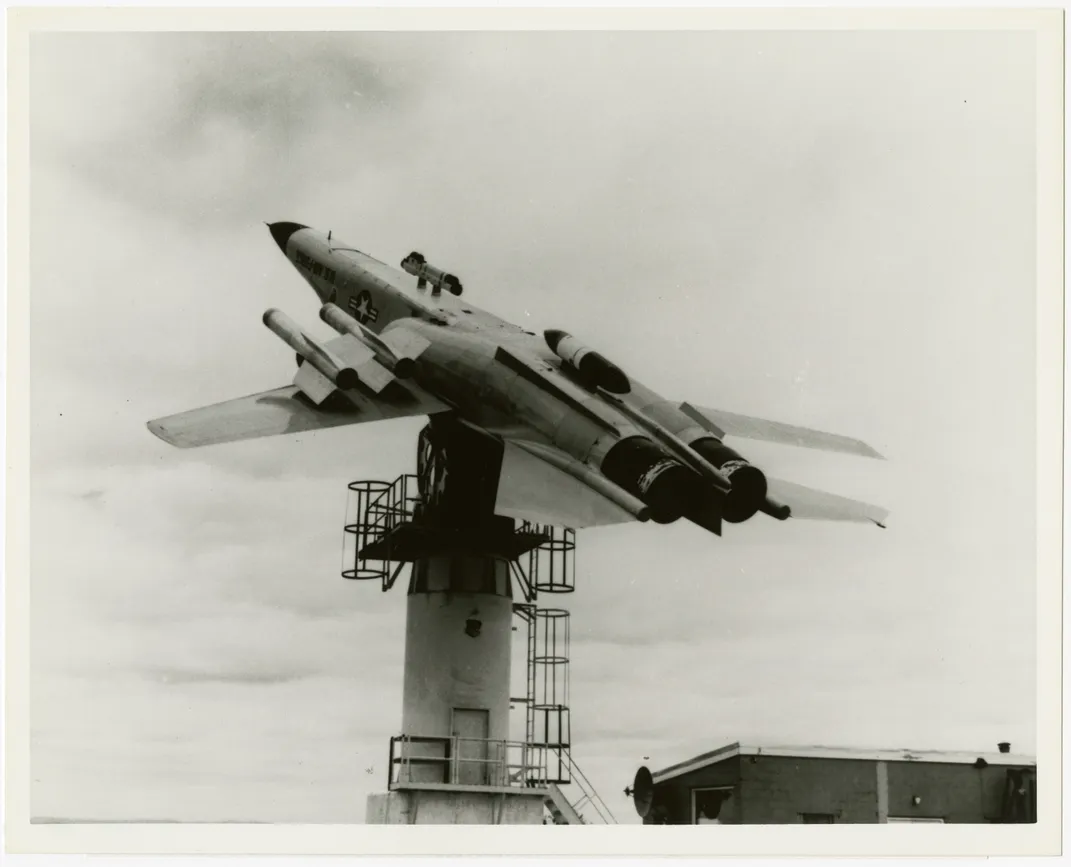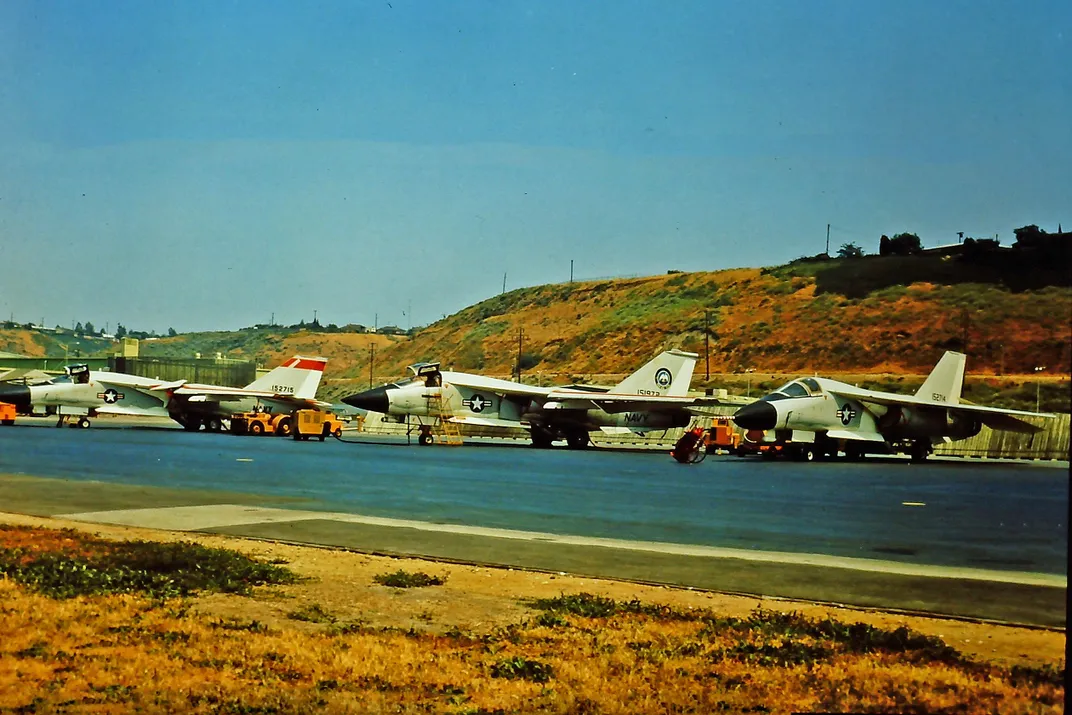Was the Navy’s F-111 Really That Bad?
Pentagon leaders insisted that an Air Force fighter-bomber would make a great Navy interceptor. They should have asked the Navy.
:focal(1736x1335:1737x1336)/https://tf-cmsv2-smithsonianmag-media.s3.amazonaws.com/filer/46/3d/463d7404-ca33-4d71-b5e1-00afd2d29961/f111.jpg)
The controversy swirling around the F-35 joint strike fighter echoes previous battles fought over aircraft tasked with serving more than one master. Perhaps the central question in today’s debate is whether a single airplane designed to perform many missions adequately is a better and truly more affordable choice than several airplanes, each designed to perform a single mission flawlessly. In 1968, the Navy had an unequivocal answer: No. But were they right?
In the early 1960s both the Navy and the Air Force were shopping for new combat aircraft. The Navy needed a carrier-based interceptor capable of engaging Soviet bombers hundreds of miles away, before they could launch long-range anti-ship missiles; the Air Force required a supersonic, ground-hugging penetrator that could duck in under enemy radar and dodge surface-to-air missiles.
Traditionally, each service developed its own aircraft to meet its specific requirements. But in early 1961, newly appointed Secretary of Defense Robert McNamara came up with a scheme to save millions of dollars by using a common airframe for the two very different missions. He was determined to check the escalating costs of ever-more-sophisticated weapons systems. The result was a warplane that neither service particularly wanted, one branded by critics as a “flying Edsel.” Former test pilot George Marrett remembers it simply as “the worst aircraft I had ever flown.”
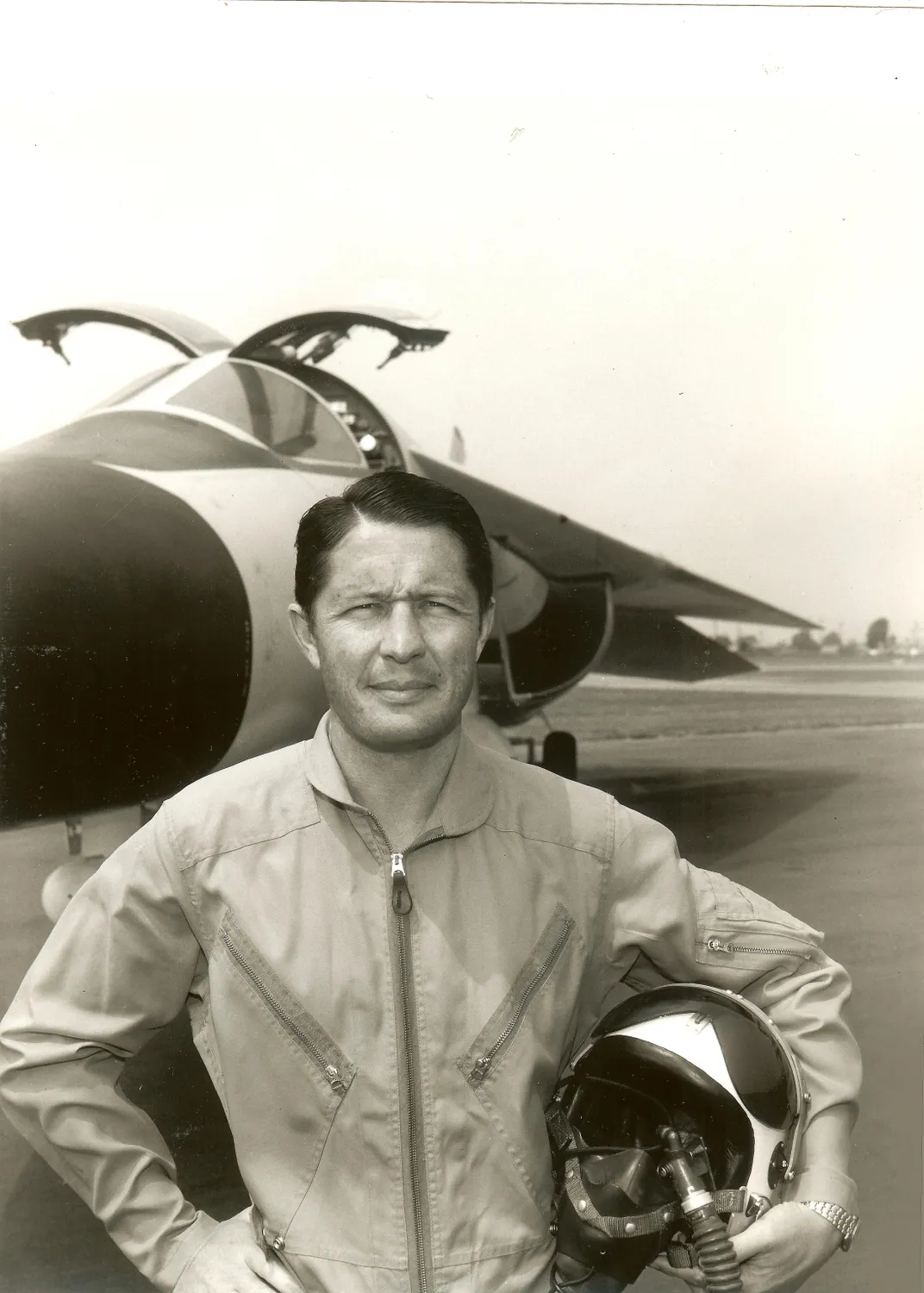
The Tactical Fighter–Experimental (TFX) design competition was launched in late 1961. At the time, the prize was one of the most lucrative weapons systems contracts ever awarded. McNamara selected the General Dynamics entry, despite strenuous objections from a military selection board that favored a Boeing proposal, mainly because the General Dynamics idea promised that the commonality would provide greater savings.
Then McNamara committed what the Navy saw as a cardinal sin: He designated the Air Force to be the TFX program manager, forcing a reluctant Navy to adopt what would essentially be a version of the Air Force’s bomber. Both services initially agreed on a twin-engine, two-seat airframe, featuring a novel swing-wing design. Beyond that, their design requirements quickly diverged, and as “McNamara’s airplane” developed, so did the Navy’s opposition to it.
Missiles in; guns out
The Navy’s requirements dated back to the 1950s, when the Soviets began developing anti-ship missiles that could be launched at long range by bombers well outside a ship’s air defenses. Remembering the devastating Japanese kamikaze attacks of World War II, American admirals had nightmares of swarms of these carrier-killers attacking their vulnerable battle groups.
To counter, naval tacticians embraced Douglas Aircraft’s unusual 1959 F6D Missileer concept. Unlike previous fighters, built to tangle in tight aerial battles with highly maneuverable opponents, the Douglas proposal was simply a large workaday subsonic aircraft armed with sophisticated long-range air-to-air missiles. The Missileer would orbit high over the fleet, basically a flying missile battery. It featured a powerful radar and side-by-side seating for better crew coordination, but lacked any trace of dogfighting capability. The prevailing idea was that the up-close, “knife fight in a phone booth” style of combat was obsolete, and the Missileer was meant to complement the McDonnell F-4 Phantom, which in 1961 entered service as the Navy’s main fighter—itself a big, heavy airplane, which could haul missiles and bombs in great quantity but quickly proved unable to turn with the nimble Soviet-supplied MiG-17s of the North Vietnamese air force. Future air battles would be fought well beyond visual range, won by whichever side came equipped with the best sensors and missiles. The launch platform could fly like a dog; the real dogfighting would be done by the missiles. The Missileer was canceled, but the concept evolved into the Navy’s version of the TFX, which was soon designated the F-111B.
General Dynamics lacked experience in building carrier airplanes, so it partnered with venerable Grumman Aircraft to build the F-111B. Grumman had not only earned a reputation for building tough airplanes, it also had previous experience building a swing-wing fighter prototype, the XF10F Jaguar. The Jaguar was scrubbed in 1953, but lessons learned would be applied to the F-111.
The F-111B was to be the most sophisticated design of its era. Not only would it be the first production warplane with a variable-sweep wing, an ambitious undertaking, it would also be the first to incorporate afterburning turbofan engines, capable of propelling the airplane to Mach 2 while still boasting a long range in fuel-efficient cruise. A brand-new, ultra-long-range radar would find targets for the new Hughes AIM-54A air-to-air missile, which itself had a 100-mile range.
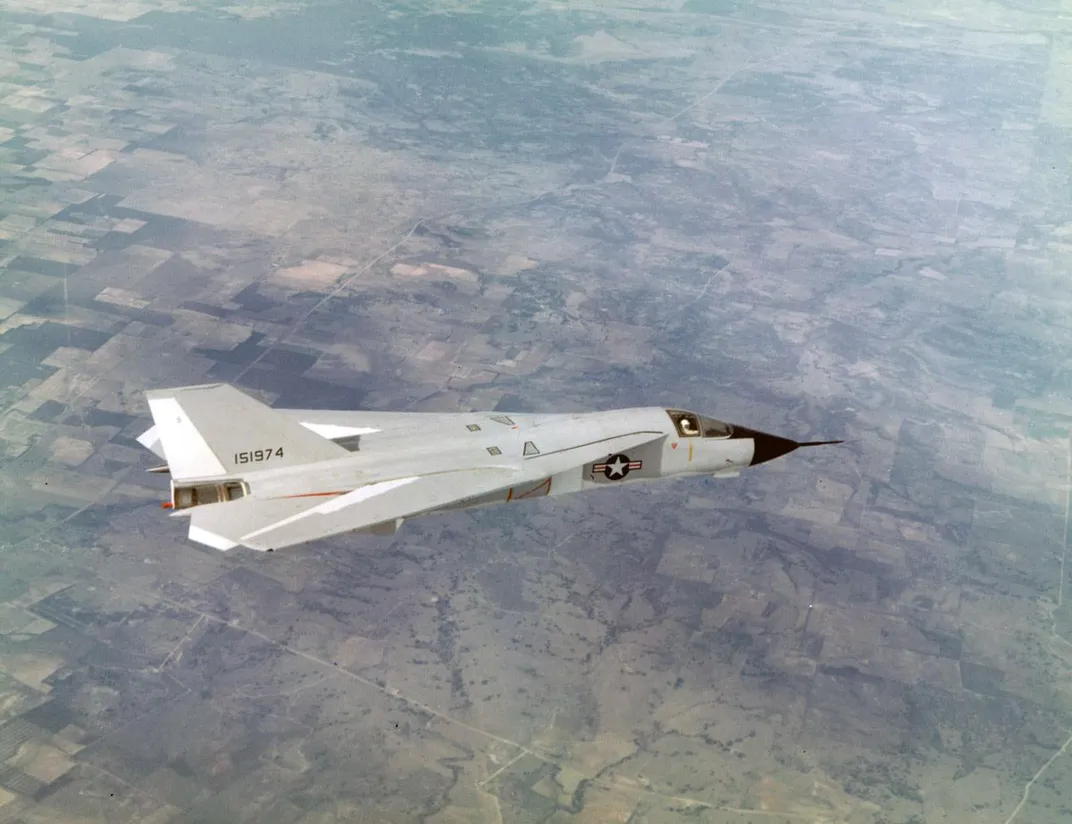
The Grumman F-111B made its first flight in May 1965, and problems with the engines quickly emerged.
To achieve the range, speed, and loiter times required by dissimilar Air Force and Navy mission requirements, General Dynamics had selected the new, unproven Pratt & Whitney TF30 turbofan engine. The turbofans worked well in cruise, but not so well during the flight maneuvering typical of military operations. A series of compressor stalls marred the F-111 test program, tarnishing the aircraft’s reputation among pilots.
Ace of the test range
“The F-111 took a terrible toll on test pilots,” says George Marrett, who lost friends in test flight accidents. Marrett, who first flew F-111s as an Air Force test pilot at Edwards Air Force Base in California, would also later fly the Navy’s version as a civilian test pilot. He says candidly, “I got the job because two Hughes crew members were killed flying the plane.”
Marrett amassed hundreds of hours flying F-111Bs, at one point doggedly bringing back an airplane, crippled by flight control malfunctions, for a crash landing at Naval Air Station Point Mugu. And despite 188 combat missions piloting A-1 Skyraiders over Vietnam, Marrett considers his F-111B crash in October 1969 to be his closest brush with death in a long flying career.
In his 2006 book Testing Death, Marrett wrote that although the F-111 was “grossly underpowered, and had poor cockpit visibility for a fighter,” it was instrumental in perfecting the Phoenix missile and its associated AN/AWG-9 radar system. “I wouldn’t want to maneuver one against a fighter,” he says in an interview, “but purely as an interceptor, it would have done well against bombers and cruise missiles.”
Hughes Aircraft began developing the AIM-54 Phoenix missile in 1962. The capabilities demanded were ambitious; it was required to engage targets at altitudes ranging from just above the waves to over 80,000 feet, flying at speeds approaching Mach 5 and at ranges of more than 100 miles. The AWG-9 radar built to find its targets was the first able to track and engage multiple aerial contacts simultaneously, something the Navy urgently needed to counter the anticipated missile swarm.
As with any cutting-edge weapons system, development was problematic and costly. Marrett spent 10 years flying Phoenix test flights, launching missiles from F-111Bs and later F-14s at drone targets over the Pacific Missile Range, off the California coast. With tongue in cheek, he calls himself a “test-range ace,” having shot down five drones. “All missile test shots were critical,” he recalls; “we were told a failure might result in program cancellation.”
Surprisingly, the innovative swing- wing technology worked well on the jet. The real problem from the Navy’s point of view was the airplane’s size. Even before its maiden flight, many in the fighter community resisted the interceptor, considering it too heavy and too sluggish for dogfighting—which of course it was not designed to do.
Some of the Navy’s own demands, such as side-by-side seating for crews cocooned within a cockpit escape capsule, were part of the F-111’s weight problem. Not only did the ejectable capsule add weight to the airframe, but Marrett recalls that test pilots didn’t think it would work. “We all looked at each other and said, ‘Well, first guy that uses that is gonna be dead.’ And sure enough, that’s what happened. It killed one of my friends. The capsule separated [from the fuselage], but the ’chute didn’t deploy.”
The interceptor was big—it had to be, to carry hours of loiter fuel and a load of six 13-foot-long Phoenix missiles weighing 1,000 pounds each. (With a maximum takeoff weight of 88,000 pounds, a fully loaded F-111B was heavier than a similarly equipped F-14; both were far weightier than other fighters of the time.) Then there was the Air Force requirement for a ground-hugging supersonic speed capability, which called for design features not wanted by naval planners that added weight and expense to the common F-111 airframe. Commonality, along with engine headaches, hindered progress and increased costs.
Engineers worked tenaciously to make the F-111B acceptable for carrier duty. They trimmed more than a ton of weight from the airframe, which along with aerodynamic refinements lowered the airplane’s landing speed to 115 knots (132 mph). Higher-thrust versions of the TF30 turbofan enhanced performance, and redesigned engine inlets all but eliminated compressor stalls.
Whatever pilots want…
But by mid-1967, resistance from the Navy fighter community came to a head. Retired Rear Admiral Kenneth “Pete” Pettigrew recalls attending a briefing on the F-111 during his initial F-4 Phantom training at Naval Air Station Miramar in the fall of 1966. During the presentation, a manufacturer’s representative was telling the gathered aviators how great the new F-111B was going to be, only to be repeatedly interrupted by instructor pilots insisting, “It’s not a fighter—cancel it!” The rep left in a huff, says Pettigrew, but not before calling out, “You better start liking it, ’cause you guys are gonna fly it!”
Among veteran fighter pilots unimpressed with the F-111B were some with combat experience over Vietnam, where despite war planner’s assumptions, dogfighting capability was proving very relevant. Retired Navy Captain Joe Brantuas was one of the first who returned from Vietnam to teach tactics at Naval Air Station Miramar. Colorful and outspoken, Brantuas was disdainful of the new jet, asserting that “a lot of politics was involved with that airplane. It was a weight around everyone’s shoulders. Pilots didn’t want it.”
What the pilots wanted was an agile fighter with guns for close-in combat, not a big missile-armed bus.
During the F-111B’s long development cycle, a vocal faction had repeatedly tried to end it, claiming it was unsuitable for carrier operations. However, as long as the F-111B remained the only option capable of carrying the fleet-protecting Phoenix missile, Navy brass reluctantly supported the aircraft.
In late 1967 Grumman proposed its own alternative swing-wing fighter, designed solely to Navy specifications, capable of both carrying the Phoenix and dogfighting. The concept would eventually be designated the F-14 Tomcat.
Buyer’s remorse in advance
McNamara resigned his position in February 1968, and the controversial F-111 program lost its strongest promoter in the Pentagon. By then, the price of the Navy’s version had skyrocketed from a projected $3 million per copy to $8 million ($59 million in 2018 dollars).
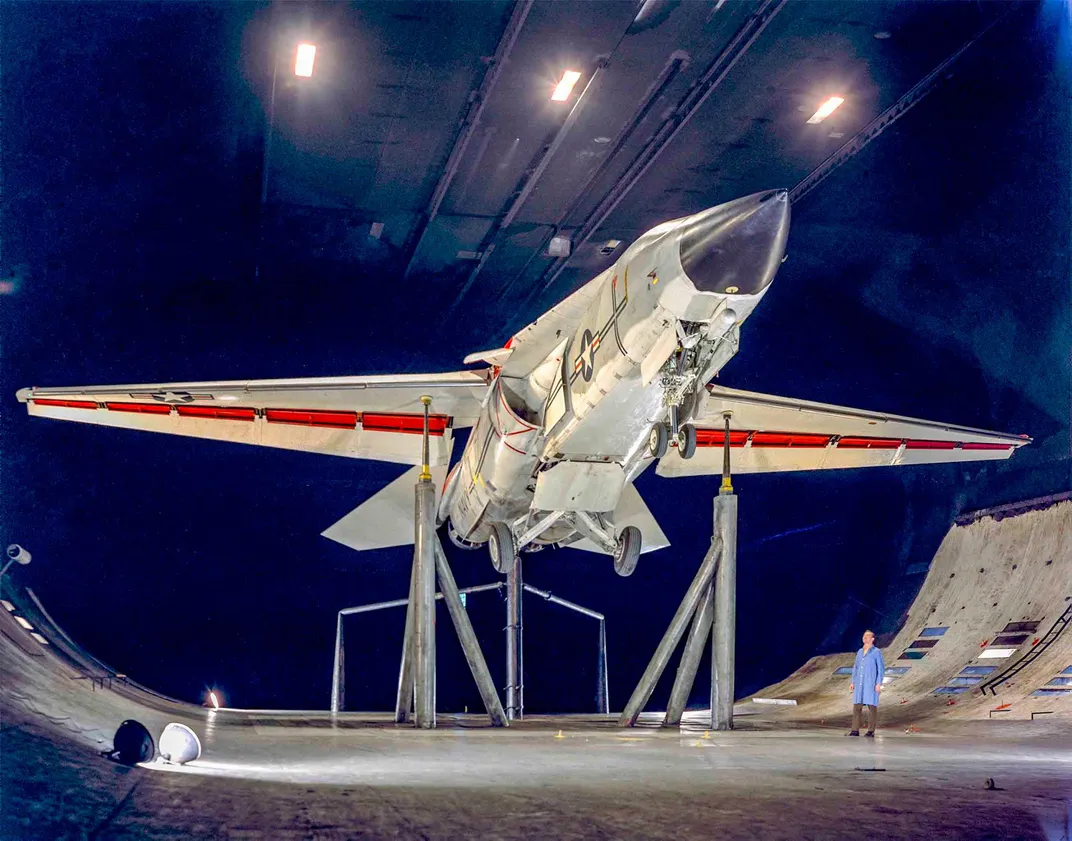
Senior Navy officials saw a chance to cancel something they never wanted. The final blow was delivered during a March 1968 hearing before the Senate Armed Services Committee. When asked by Committee Chairman John Stennis whether new engines would make the F-111B acceptable to the Navy, Vice Admiral Tom Connolly pointedly replied: “Senator, there isn’t enough power in all Christendom to make that airplane what we want.” That response paved the way for the F-14. Congress declined to approve further funds, and soon after the F-111B program was scuttled.
“As a pat on the back, the Tomcat was named after him,” confirms Brantuas, who knew Connolly personally. (McNamara would later claim in an interview that the Navy had sabotaged the F-111 program.)
As a young maintenance supervisor, Mike Glenn worked on the four F-111Bs loaned to Hughes Aircraft for Phoenix missile testing. Later, he would also support early F-14s flown by the company. Glenn got a close look at both big airplanes.
Not shy about expressing an opinion, Glenn believes the Navy would have been smart to buy about 40 or so F-111Bs and deploy small detachments of them to carriers for fleet air defense. “This would have given Grumman time to properly develop the F-14,” he explains. The Tomcats had their own share of teething problems. “By the last F-111B built, Grumman and GD had worked out the bugs. I will tell you that [prototype] number 7 could fly circles around our early F-14s—longer, faster, and very maintenance-friendly compared to earlier F-111Bs and F-14s.”
In his in-depth analysis of the TFX saga, Illusions of Choice: The F-111 and the Problem of Weapons Acquisition Reform, Robert Coulam writes, “versus other aircraft, and certainly for its fleet air defense mission, the F-111B provided substantial increases in Navy capabilities.” Coulam also relates that although Navy Secretary Paul Ignatius (1967-68) believed that the F-111B had technical problems, “he also recognized that the Navy had an ‘emotional’ problem with the plane.”
In a 2003 interview, Ignatius would say of the jet: “The more I looked into it, the more I became convinced that the matter had reached such an emotional state that even if the F-111B, the Navy version, turned out to be an excellent airplane, and it wasn’t all that good, but even if it did, the Navy still wouldn’t want it.”
One justification then given for scrubbing the interceptor was its perceived lack of carrier compatibility, but oddly, the airplane wasn’t tested aboard a carrier until after its cancellation, and only then “at the insistence of Secretary Ignatius,” notes Coulam.
In the summer of 1968, when the fifth F-111B prototype flew its carrier trials, Pete Pettigrew was aboard the USS Coral Sea. To the surprise of many, the big interceptor completed its evaluations without major problems. “It flew a nice approach, wasn’t too fast, and performed well on the ball,” says Pettigrew. “They were pretty happy about it.” But he quickly adds, “If all you were trying to do was land aboard ship…then the plane was all right.”
Although the Navy never wanted any part of a joint TFX program, its ill-starred version might have served as an able interceptor had it not been for changing requirements and lengthy delays in Phoenix missile development. Upon the arrival of the first F-14s, the remaining Navy F-111s were relegated to boneyards. “It was like the Navy didn’t want both planes flying at the same time so they could be compared,” says Glenn.
With the Navy’s cancellation, all the compromises made by the Air Force in pursuing two-service commonality were for naught. Moreover, when the Navy dropped its planned buy of 705 F-111Bs, the advantages of economies of scale were lost, increasing the price of the Air Force planes.
Despite problems inherent to the immature design—which ironically included compressor stalls that resulted in the crash of many F-14s, an issue largely fixed for the F-111—the Navy rushed its Tomcats into service. They would be the last of Grumman’s “cat” series of fighters (and the most famous, after starring in the 1986 film Top Gun), and far pricier than the F-111B they replaced. Having flown both jets, Marrett thinks it was a good idea to cancel the F-111B, and considers F-14s “the best all-around fighter I ever flew.”
Becoming the Aardvark
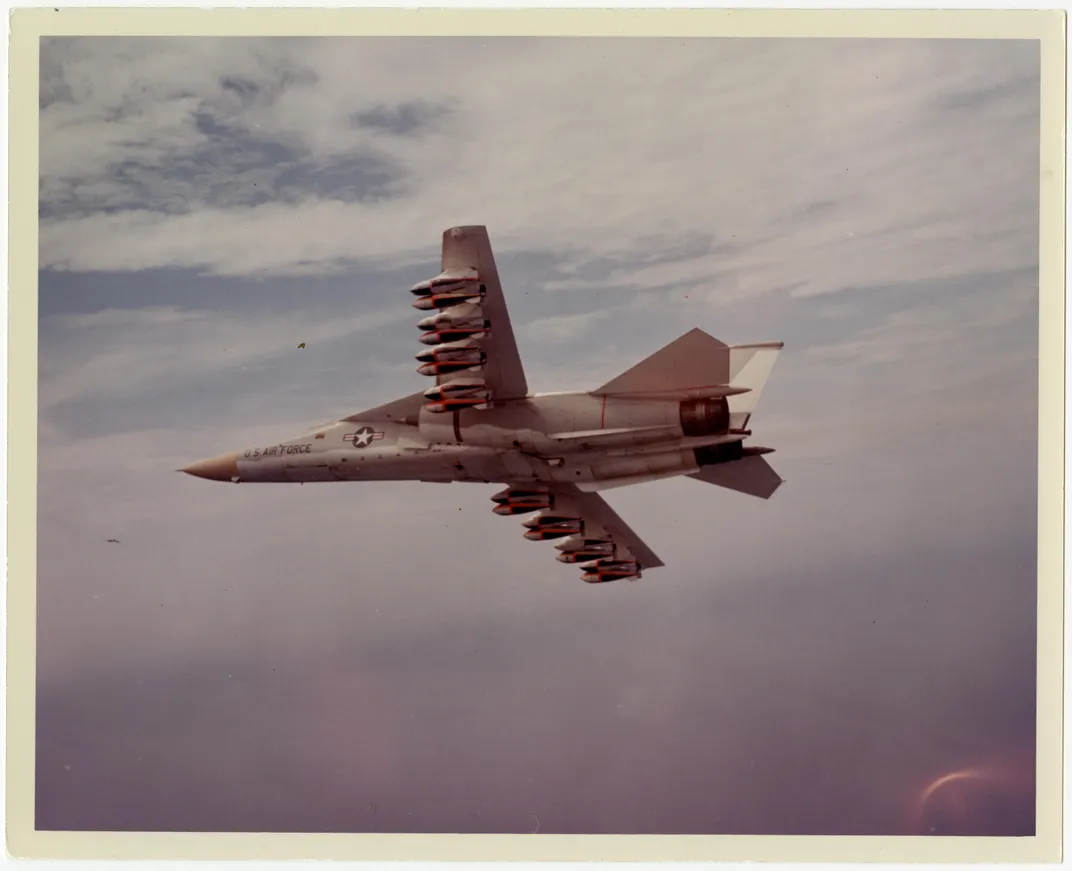
Several analysts have pointed to the Navy’s experience with the F-111 as a cautionary tale for services deploying the F-35. One pattern the airplanes share is harsh judgment leveled by a chorus of critics before the craft proved themselves in operations. Though the Navy never took to the F-111, the Air Force accepted more than 500 in various roles, including strategic bombing and electronic warfare. Despite an inauspicious combat introduction over Southeast Asia in 1968, Air Force F-111s would mature into exceptional attack aircraft. Indeed, different versions of “McNamara’s airplane” went on to serve for 30 years, with EF-111 electronic warfare variants deployed to the Persian Gulf as late as 1998. The Australian air force picked up two dozen more, and kept the F-111 as its main attack airplane until 2010.
The Air Force and Navy have proved that a single airframe can be adapted for their different needs—the F-4 Phantom flew for both services beginning in the 1960s until, for the Navy, well into the 1980s, and for the Air Force, into the 1990s.
Yet the debate continues, as heated now as it was decades ago when the Pentagon introduced the then-novel concept of an “affordable” joint-use warplane.
